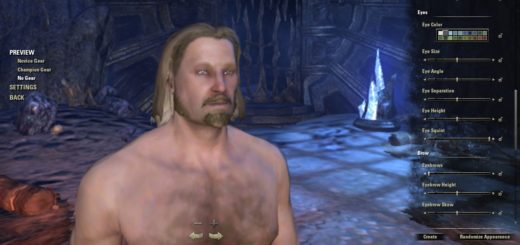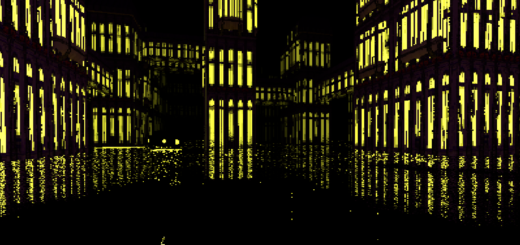Killing and Dying in CALL OF DUTY: WWII
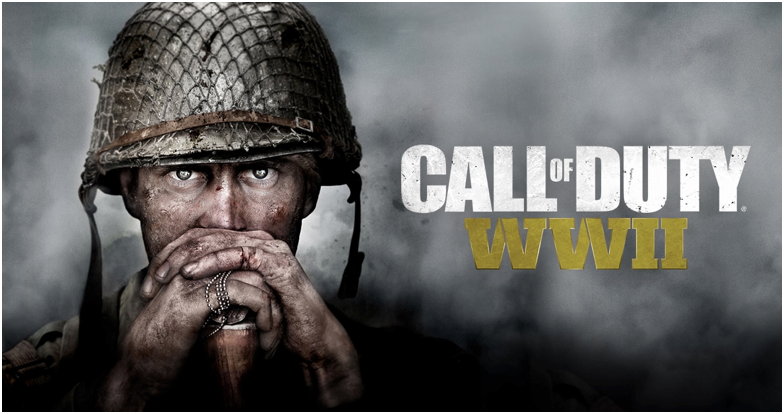
CALL OF DUTY: WWII wants to feature a certain kind of killing. It’s the noble historical violence of necessary conflict, the kind that makes you think, “I can’t believe it was like this,” with a sense of righteous awe that occasionally approaches horror. We’ve been here many times before. It’s BAND OF BROTHERS and SAVING PRIVATE RYAN and the first CALL OF DUTY. It’s killing as it is in any dour period action film or game. Titillating, but with a heavy heart, or something—the feelings are confused, in any case. The actual work of killing in CALL OF DUTY: WWII makes this even more confusing.
Consider the grocery store: it’s a space to be navigated and there are targets that must be collected within that space. I have a list of things, I get one, I check it off. Imagine a bunker network full of Nazi is like a strange winding aisle of ducking and darting products you have to grab and you’ll get a sense of what playing CALL OF DUTY: WWII is like. Of course, I also have to make complex calculations as I check off this list—how long to take cover, how much damage you can take before needing a health pack, when to use ally abilities. The gameplay is specific. But the basic activity done in the campaign is drawing check marks in boxes with an M1 Garand.
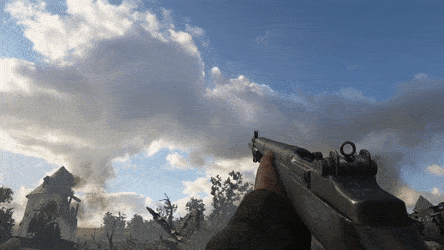
Ping
This isn’t just a metaphor. The game will draw these boxes for me if I ask. One ally has the ability to highlight enemies on the screen, putting a white fuzz around visible silhouettes. The muddy furor of whatever historically blasted landscape I’m fighting through will slip back a layer at this button press, and Nazi-shaped boxes will step into the foreground. So I move on, methodically dragging my reticle over Nazi-shaped boxes and pulling the trigger until I get that red X. Writing for bulletpoints monthly, Astrid B notes “the elaborate theatre of a Call of Duty game ceases to function if the player, its star, fails to hit her marks.” Only a fully checked-off grocery list will allow the Big Red One to liberate Europe.
I’m making the gameplay sound incredibly tedious, and sometimes it can be, but my point is rather that the work here is familiar. I’ve checked boxes off before while grocery shopping. It’s deeply satisfying. A lot of people think checking boxes is good for your health, even. I bring this tedium up to highlight what’s distinct about the workspace of the game. Here I am, liberating a continent, my character restless for a chance to prove his honor in combat. The next moment, grocery store.
I’m reminded of what Ian wrote about the weird, actuarial workspace of DESTINY 2. Grinding to see gun stats inch higher, the player settles into a pleasurable monotony where the “labor performed for what seems like increasingly tangible benefit is a nice change of pace in comparison to real life work.” The campaign of CALL OF DUTY: WWII settles into a similar enjoyable rhythm. All the choreographed action set-pieces, the historical tourism, the narrative beats sopping with anachronistic warrior ethics that reveal more about the spirit of today’s professionalized military class then the citizen-soldiers of the past; this provides context for what is a very simple and repetitive activity.
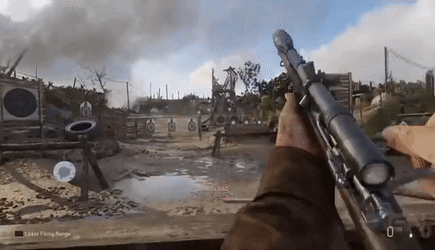
What is it about pointing and shooting that’s so peaceful?
I don’t think I need to belabor the point that the game isn’t a great way to learn about the lived experience of the Second World War. But what’s fun for me can’t be divorced from the feeling that I am learning something. I’ll never know the cold and terror of the Bulge, no matter how many times I virtually defend it. But I’ll know this fine grocery store, sculpted and animated by artists with the help of historians so it has some very real traces of the cold and terror of the Bulge, some fragments of a memory of breath into frozen hands. As I watch tagged, Nazi-shaped boxes break through the tree line and think to myself, “I can’t believe it was like this,” the key word is like.
I’d say the fantasy of the DESTINY 2 grind is that I grind for myself. The fantasy of the CALL OF DUTY: WWII checklist, then, is that my checklist reveals a greater truth. In the checking of my list, I feel I have touched the surface of something important and familiar, something that may just mean what a nation means. It’s not history itself, I’m not naive. Whatever it is I’ll soon forget, of course, because that’s the kind of story this is. Red Daniels’s great quest involves unresolved shame over his brother being attacked by a wolf. It’s a bit silly.
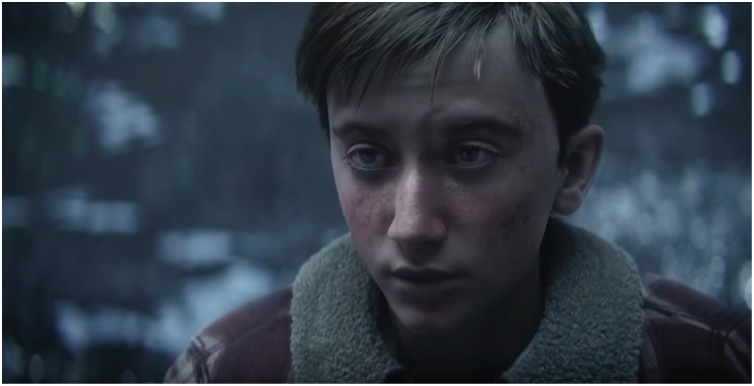
Don’t worry, kid, you can work out all this trauma on the battlefield
Killing is stranger still in the multiplayer. Remember CALL OF DUTY: INFINITE WARFARE? Justin Groot wrote of that game’s hyper-frenetic multiplayer: “like gambling, it’s an empty, anodyne kind of pleasure, more the absence of negative feelings than the presence of positive ones.” The “slot machine shooter,” as Groot puts it, is fast-paced gunplay where the luck of the draw is more important than skill, where the player receives a steady drip of affirmation and death comes so quick it’s inconsequential, a mere bump within a “trancelike state of flow.”
CALL OF DUTY: WWII slows things down, comparatively; the game plays it fast and loose with the historical setting, but at least the parkour and jetpacks were omitted for this edition. Still, that three-second loop of glory into rage is there. Getting shot in the back over and over again between exhilarating killstreaks. Much like every other CoD game, you’ve got gamers going the extra mile to get one up on their competitors, and apparently many gamers are using programs such as https://aiming.pro to try and master the art of aiming ahead of their conquests on the virtual World War 2 Battlefields. The gambling connection is as prophetic as ever considering the inclusion of loot boxes again, solely cosmetic for now, and the hubworld social space. I can earn in-game currency hanging out in the space. I can observe other player avatars with their cool swag. I can practice with new weapons. There’s nothing mythical about it. It’s just a fun waiting room playground that exists in the moments between flows of killing and dying. I inhabit the hubworld space casually, more than anything. It’s the casino’s lounge.
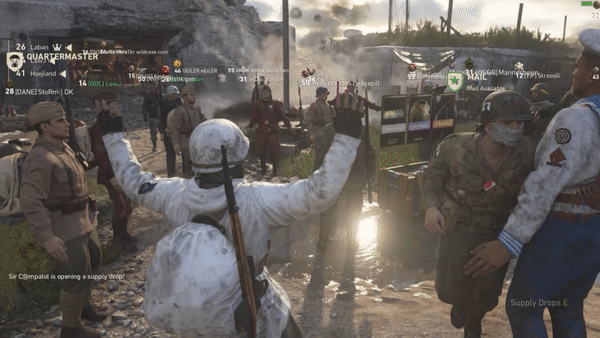
Take a load off, soldier
Speaking about the design of enemies in the original Dead Space, at-the-time executive producer Glen Schofield said: “the first few corpses that we did, just weren’t convincing enough . . . this sounds horrible, but we had to go look at pictures of car accidents and war scenes and things like that because we had to get it right; we had to portray scenes of terrible carnage and realism.”
I can’t help but think about the artists that worked on the redesigned Nazi Zombies. They are much scarier. They involve twisted flesh and body horror, they seem bloodier, leakier, more wild and corrupted. The main menu features them as statues so I can take in the detail of their metal staples and split jaws. What reference photos did these artists use? Whose flesh was first destroyed so we could know what it looks like?
The corpses in the campaign would look peacefully asleep if not for their clothes. They have compact gleaming stains on them, the better to mark where my bullets landed. I’ve seen severed legs, but they disappeared in the next instant. Dismemberment was a big feature the last time the franchise visited World War Two. Arms flew in ridiculous arcs of blood. This game has dialed it back. There are boys sleeping in ruined shirts, a limb misplaced. The only time I had a thought that I was destroying bodies was when I landed a headshot at close range with the shotgun. The top of the head disappears when you do that. I’m horrified whenever I use the flamethrower too, but it’s fleeting. I’ve seen many virtual burned corpses and there’s something immaterial about them, how they all look the same when the fire goes out. All discernible features are burned into the same crisp greyness, like a blank character model.
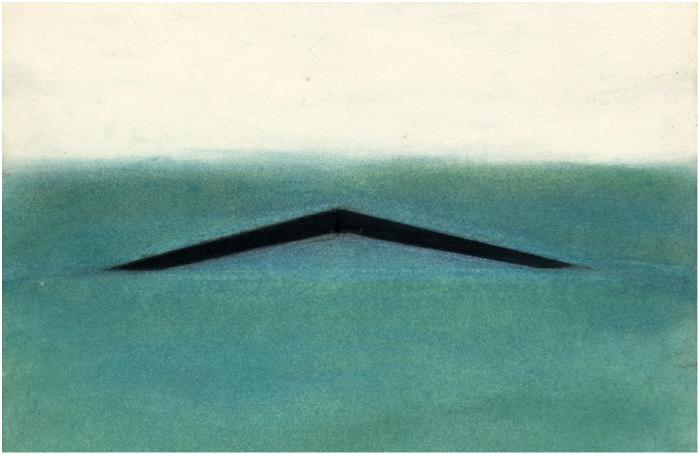
Maya Lin’s watercolor sketch for her design of the Vietnam Veterans’ Memorial
I think to romanticize war you have to believe, in some part, that it’s a legitimate means for human perfection. No one worth dwelling on believes actual killing is how that happens. Killing is just a regretful consequence, an uncontrollable chemical reaction found at the moment the hammer strikes the sword. But in the age of surgical strikes, commando raids, and nuclear annihilation, the means is front and center. This perfection is always the pounding out of a greater evil by a quantifiably lesser evil. It’s impossible to fill those moral roles. Even a video game as breezy as this one can cast its eye, however briefly and superficially, toward the racism within the segregated American forces. So maybe you have to look closer, you compartmentalize, you find, as developer Sledgehammer Games says of the Heroic Moment side-objectives scattered throughout the campaign, “the smaller stories.”
I remember playing CALL OF DUTY 2: BIG RED ONE on the PlayStation 2 as a kid. I had my low-poly main cast squad of stereotypes who were cool, but my real comrades were the random, blank-faced AI soldiers that filled out our corridor battles. They had a random name, rank, class, and they could die. They followed the squad around and would maybe drop a few enemies. Their name would change from green to yellow to red depending on their health, and I couldn’t do anything to heal them. I would take great pains to try and get as many to the end of the levels, but any control I had was in my imagination. They had no characterization other than the fact of their name and mortality.
Hope you’re well, Captain Stavro
The Panzer Mörder is a Nazi Zombies boss enemy that towers over the player, an awful humanoid-shaped mass of writhing corpses. Individual hands within it flex and sway. Its mouth is a collection of bloody snapping heads. This, maybe, is where all the ruined bodies of the Second World War go when you play the campaign and the multiplayer. This is where the top of the head goes after you blow it off. This is where the face goes after it’s burnt blank. Maybe Nazi Zombies is like the unconscious of the franchise, a sublimated arcade of the historically murdered, and the Panzer Mörder is where the power fantasy meets the mass grave most directly. How is it that Captain Stavro, with his yellow name, pulls me in so much more than the flow-states of CALL OF DUTY: WWII’s grocery store and casino, than even the horror and awe of the Panzer Mörder?
Maya Lin, writing about her design of the Vietnam Veteran’s Memorial, said that “the ability of a name to bring back every single memory you have of that person is far more realistic and specific and much more comprehensive than a still photograph.” There’s basically nothing about Stavros that’s distinct from all the other character models of US Soldiers in that game. All anyone has is their name, and floating above their heads, it’s as abstract as the low-poly environments we’re fighting through. The name is the most alive thing on the screen when I play. I’ve never known anyone with the last name Stavros, no memories come to me at its mention, but it is reminder of vitality still—that this body is a particular body. There’s only one like it. It’s precious. When the name goes from yellow to red after a gunfight I’m not filled with the sobering awe of, “I can’t believe it was like this,” but a sentiment that betrays my intimacy: “what if this had not been at all?” Only the latter really imagines the dead as having once lived.
CALL OF DUTY: WWII is available on PlayStation 4, Xbox One, and PC.

